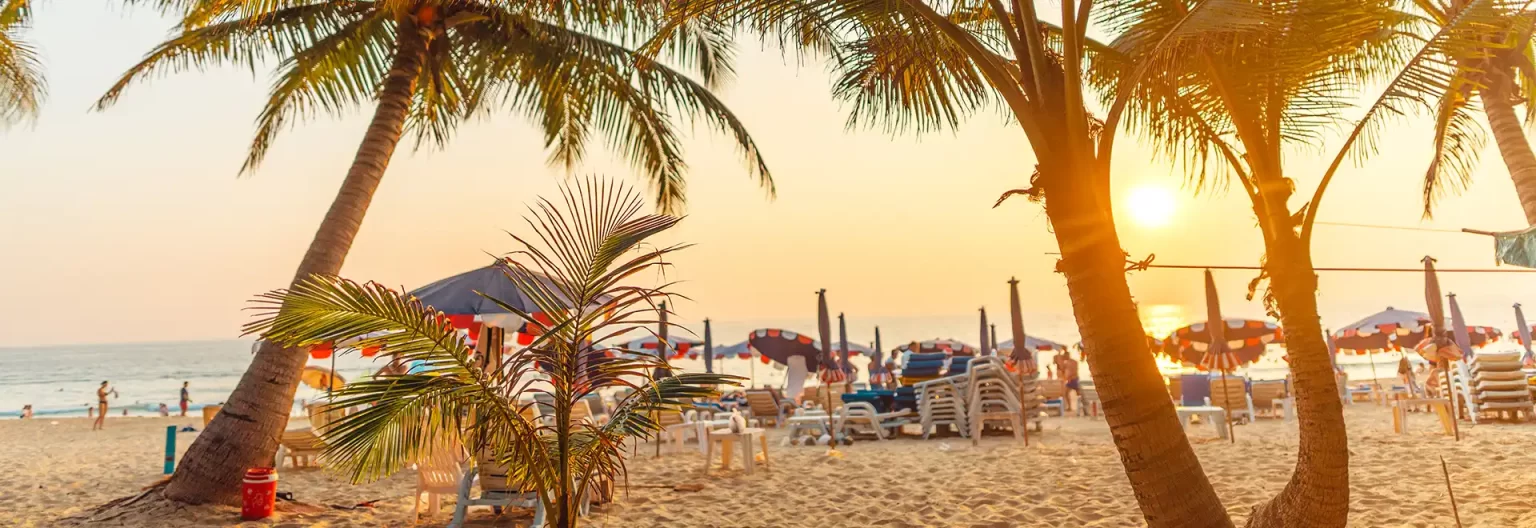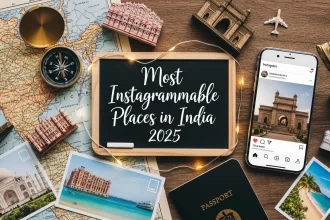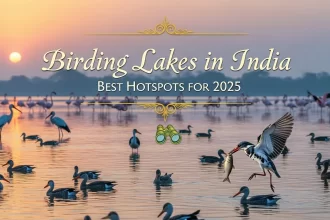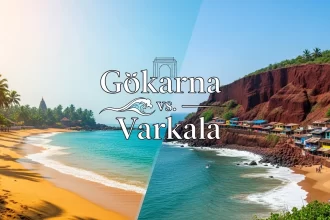At the turn of the world to 2025, all of Goa stands at a crossroads. What was once very much the beautiful-people’s playground for its glorious beach parties and its totally laid-back atmosphere is changing fast. From the trampy, essaying crowds of New Year’s Eve 2021 to the quieter, emptier streets of 2024, it is clear that Goas tourism landscape is in the process of deep change. But is it living? The answer is not simple, and the situation is far more nuanced than it may seem at first glance.
The Declining Tourist Numbers: Fact or Fiction?
The last few weeks have seen a spate of pictures of empty cafes, deserted lanes, and an overall lack of tourists in Goa during what is traditionally the peak season. This has created a lot of fear among people that Goa, as a premier tourist destination, is dying. There, the battle in the commentaries continues with different voices arguing the causes: too expensive and pathetic infrastructure or tourism because of irresponsible tourists who behave outrageously in public and fail to respect local culture.
This debate went full circle when the Chief Minister of Goa, Pramod Sawant, called it a white lie and maintained that the hotel was full while the flights coming to Goa have already been booked. Meanwhile, Tourism Minister Rohan Khaunte blames “paid influencers” for the spread of false information. He went so far as to say that he doesn’t want Goa to become another Thailand – that is, the low-budget mass tourism model that the country adopted. The government’s attitude speaks volumes that even as growing unrest continues to roil Goa, tourism here continues to boom, isn’t it?
The Transformation of Tourism in Goa
The story of tourism in Goa is far from simple. Goa’s tourism, which began as a haven for hippies in the 1960s, evolved through the decades to become a popular destination for young Indians seeking affordable beach holidays. It became the birthplace of the country’s first party scene in the 1990s, drawing backpackers, and eventually mass tourism. In recent years, however, that has changed. As alcohol taxes increased in the rest of India and travel to Southeast Asia became more affordable, the state’s once-predictable tourism market began to face challenges.
The pandemic only accelerated this shift. Urban professionals started staying in holiday homes permanently, thereby pushing up real estate prices and booming the hospitality business. This was perhaps something of a renaissance for Goa, as restaurants, cafes, and luxury properties sprouted up everywhere in the state. But when the world learned to live with this new normal, these temporary adjustments started showing cracks.
The Impact of Global Political and Economic Events
Over the last few years, a number of global geopolitical and economic events have impacted tourism in Goa very significantly. According to one owner of a café in North Goa, this used to be one of the regular clienteles of tourists coming from places like Russia, Ukraine, and Israel. However, the ongoing war in Ukraine and other travel restrictions have dissipated this section of the tourist crowd almost completely. Most visitors avoid it, with the owner noting that not many are coming in to spend money-they are after the cheap booze, and the unofficial experience. The dregs of tourists have meant that the visiting demographic is not affluent enough, creating more discontent within local business owners who depend on premium visitors.
This has put the spotlight on the “minibus tourist” stereotype—the lower-middle-class tourist who, the critics argue, does not make much contribution to the local economy. Businesses are of the opinion that such tourists like to cut corners by bringing in liquor from outside and preferring cheap homemade meals instead of going to restaurants. This is quite a contrast to the type of tourist Goa was once known for and what it is increasingly experiencing.
Goa’s Demand for High-Class Tourism
Despite these challenges, the people and businessmen of Goa have begun to feel that the state can reinvent itself as a luxury destination. As Southeast Asian destinations like Thailand and Bhutan are positioning themselves as tourist hotspots, Goa is slowly emerging as a potential competitor. According to renowned restaurateur and F&B expert Darnish Singh Kalra, Goa can be developed as a high-end destination if the right infrastructure, accessibility, and government policies are in place.
Kalra reminisces about running a restaurant in South Goa during 2014. He recollects there was a huge lack of infrastructure to support luxury tourism back then. Even the events such as demonetization left the streets bare on New Year’s Eve in 2016, the core problems didn’t change. Goa needs more than the influx of well-heeled tourists; it needs a systemic transformation in how it accommodates this new wave of tourism.
An Airbnb owner in North Goa echoed this view, saying the state has increased short-term rentals due to the property owners renting their homes, though demand hasn’t quite caught up with supply. Many buyers who once came to Goa seeking permanent escapes from city life are now turning to vacation rentals as a source of income. There is too much on offer in the market, and the lower-priced ones are always attracting a new type of tourist, thus disturbing the balance.
Cost of Goan Transformation: The Rise in Price and New Standard
Among the major changes, it has been stated that the service prices in Goa are rising. The price of a meal, rooms in hotels, or even rentals at the beach has been on the rise. A local view is that this is just the beginning of Goa’s new branding as an upscale destination. Restaurants run by India’s leading chefs regularly figure in “best-of” lists, and the majority of these are priced at, or higher than, what similar restaurants in Mumbai and Delhi can command.
This change is being embraced by some but criticized by others who feel that the Goa they once knew—the place of cheap booze and inexpensive holidays—is slipping away. An anonymous Airbnb owner pointed out that Goa no longer offers the same cheap food, alcohol, and entertainment that it once did, and in his opinion, this is a positive development. He believes that it should not focus on cheap tourism but instead indulge in the needs of those seeking more luxurious holidays, for them to pay as they go along.
The way forward: towards change and sustainability
The question that Goa faces today is not whether tourism is dying but whether it can reinvent itself in a manner that balances the needs of its people and its visitors. Goa needs to enter the new mold, one that prides high-end experiences, luxury tourism, and sustainable growth. This will require significant changes in both infrastructure and policy, however.
The state will experience challenges in terms of connectivity and accommodation standards along with the surging issues with overcrowding. It must also find means to enforce laws regarding its cultural heritage and ensure that economic benefits are harnessed due to a high-end class of tourists.
Conclusion: The New Goa Era
The fights over Goa’s tourism future cannot be said to be over as yet, yet they are the part of bigger story of transition. In the process of this transformation, the state needs to find ways to honor its past while adapting to the present. Mass tourism and the entry of a type of traveler are not indications of death but rather of change—change that could finally place Goa in a more sustainable, luxury light for the future. By emphasizing quality over quantity and fostering the right kind of tourism, Goa will not end but perhaps thrive in its new incarnation.







